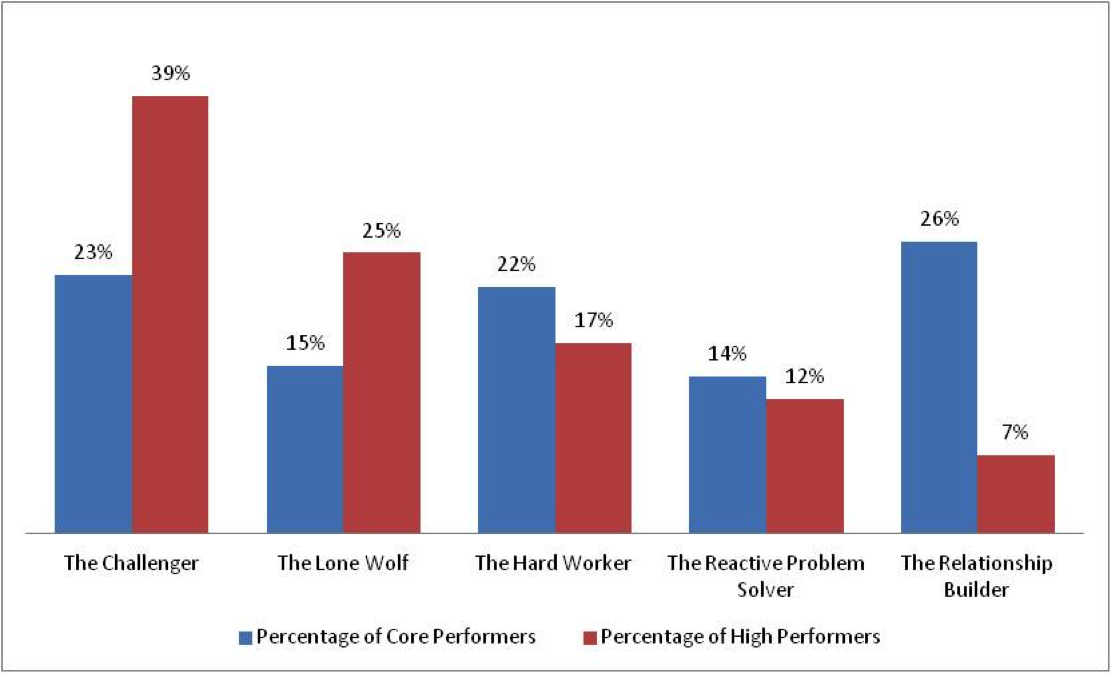Multifamily Blogs
Winning The Sale In Inquiry
Winning The Sale In Inquiry
In 2009, the Corporate Executive Board (CEB) conducted seminal research in the field of sales. Later dubbed The Challenger Study, it was designed to identify what separates high performing salespeople from the middle of the pack.
As such, they dug deeply into a variety of sales teams, structures and people. Specifically, they interviewed 600+ sales people (since expanded to several thousand) and measured them across several dozen dimensions.
From these interviews and assessments they were able to establish that there were five fundamental approaches salespeople took. While they went into the study with a basic belief that there was not a single personality or approach to be a high performing salesperson, what they found was truly astonishing:
“Core performers” are spread relatively similarly across all 5 clusters of sales styles. In other words, any kind of sales approach can achieve average results
In contrast, “high performers” are clearly over-represented in just two clusters: Challengers and Lone Wolves with Challengers represented significantly more often than Lone Wolves.
Perhaps most strikingly, Relationship Builders (the dominant approach in multi-family sales) are severely under-represented among high performers. They come in a distant fifth out of five.
Source: CEB White Paper, The New High Performer, 2009
So, what makes a salesperson a Challenger? More specifically, how can a leasing associate become one?
The simplest answer to these questions is to ask better questions and to spend more time focused on what we call The Inquiry Phase. One of the most interesting things about Challengers is that the difference in their performance has little to do with experience, product knowledge or personality. They have no advantage as all four other styles share similar experience and product knowledge; and the “challenger” approach is about their approach, not their personality.
Challengers challenge the thinking of the people they are working with. They influence their prospects’ thinking and help them understand what they really want at a deeper level.
The model I recommend to my clients breaks the sales process into four distinct segments:
Discovery Inquiry Advocacy ImplementationWhile most sales training focuses on Advocacy or Implementation, we’ve learned that it’s in the Inquiry segment where the sales is actually won.
The Inquiry Segment
Just as the name indicates, Inquiry is the segment where we ask the most questions. Even though it’s still relatively early in the process, this is really where the sale is made. In traditional sales models, the approach is to ask “probing questions” to “qualify” the prospect so we can “sell the benefit, not just the feature” or “sell the solution.” This creates a natural tendency to intermingle asking questions and then presenting our solution and turns out to be a critical differentiator from how the “challenger” salesperson approaches the process.There are 3 key areas of emphasis in the Inquiry phase :
Develop trust through asking resonating questions. It seems intuitive that we earn prospects’ trust by knowing our product and answering their questions. But think about that a moment—don’t most of our competitors know their product also? Aren’t they capable of answering questions, too? And aren’t prospects skeptical in general as they listen to any “product pitch.”The reality is that we earn more trust by asking really good questions than providing really good answers—questions that get our prospects thinking; questions that demonstrate we understand them and their needs as well or better than they understand themselves; questions that get beyond “clichés and facts” to understand their opinions and true feelings. Then we can authentically tailor our presentation to teach the prospect something and thus be valuable to them.
Uncover key decision drivers. There are two kinds of decision drivers: needs and wants. Needs are “requirements.” As such, there is no sale if we can’t meet the needs. Wants are the “desires” and “preferences.” As such, we don’t have to meet each one to win, but we do have to understand our prospects’ priorities. Often, salespeople mistake wants for needs and vice versa. Skilled “Challenger” salespeople distinguish between the two and react accordingly.
“Shorten your sales cycle by slowing down the sale.” This may sound counter-intuitive, but the reality is that slowing down the sales process by fully executing the Inquiry segment actually shortens the sales cycle. We earn trust through asking resonating questions that uncover the hidden needs and wants as well as the more obvious ones. We stand out by making the process be all about the prospect whereas the typical salesperson keeps talking about their product. This approach puts a premium on reducing objections rather than overcoming them.
This segment closes with a confirmation of needs and a prioritization of wants which sets the stage for the advocacy segment. We’ll cover advocacy in a future blog.



